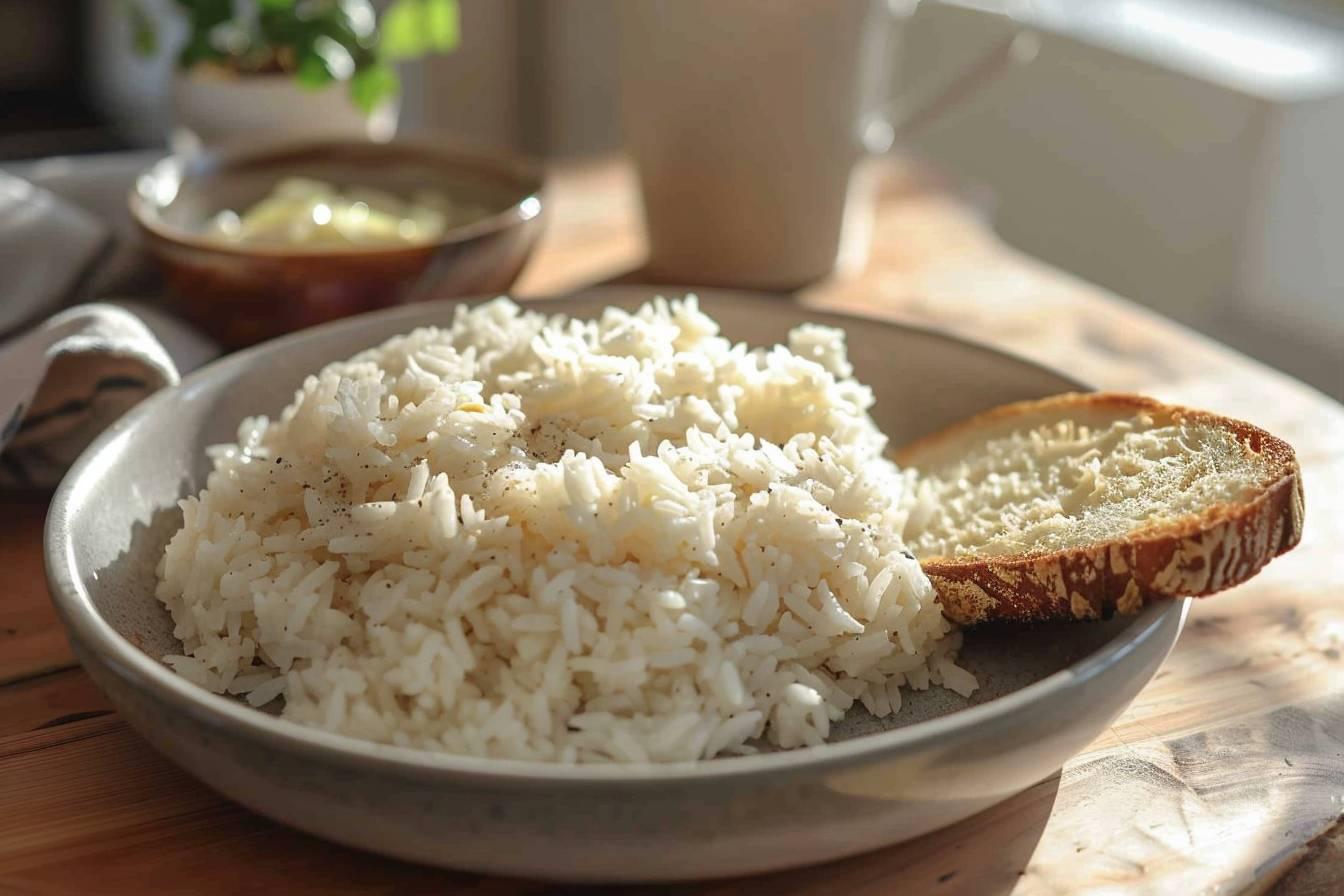This article compares rice and pasta, exploring their nutritional profiles and health impacts to guide dietary choices. Here’s a brief overview :
- Nutritional comparison : Pasta has more protein and fiber, while rice offers unique vitamins and minerals.
- Health considerations : Pasta has a lower glycemic index, beneficial for diabetes management and blood sugar control.
- Cooking and versatility : Both are versatile ingredients, with pasta often having a shorter cooking time.
- Individual needs : The choice depends on personal health goals, dietary restrictions, and taste preferences.
When it comes to choosing between rice and pasta, many people find themselves pondering which carbohydrate is the healthier option. Both staples have been diet mainstays for centuries, but their nutritional profiles and health impacts differ. Let’s dive into a comprehensive comparison of rice vs pasta to help you make an informed decision about which to include in your meals.
Nutritional comparison : pasta vs rice
Understanding the nutritional differences between pasta and rice is crucial for making the best dietary choices. Both foods are significant sources of carbohydrates, but they vary in other important nutrients :
- Carbohydrates : Both pasta and rice contain similar amounts, ranging from 43 to 53 grams per cup cooked.
- Protein : Pasta takes the lead with 8 grams per serving, compared to rice’s 2 grams.
- Fiber : Pasta, especially whole grain varieties, offers more fiber than white rice.
- Vitamins and minerals : Rice contains small amounts of certain vitamins and minerals not found in pasta.
- Calories : White pasta and white rice are comparable, providing 220-250 calories per cup.
It’s worth noting that whole grain versions of both pasta and rice are nutritionally superior to their refined counterparts. Whole grain options provide more fiber, vitamins, and minerals, making them a healthier choice overall.
For those seeking alternatives, there are now pasta varieties made from legumes such as lentils, chickpeas, and beans. These options boast higher protein and fiber content, potentially offering additional health benefits.
Health considerations : which is better for weight loss and diabetes ?
When it comes to health implications, both rice and pasta can be part of a balanced diet. However, there are some key differences to consider :
Glycemic index : Pasta generally has a lower glycemic index than rice, which means it causes a slower rise in blood sugar levels. This makes pasta a preferable option for individuals with diabetes or those aiming to manage their blood sugar levels.
Weight management : Both rice and pasta can be incorporated into a weight loss plan, but portion control is crucial. Whole grain versions of either food are more beneficial for weight management due to their higher fiber content, which promotes satiety.
Here’s a comparison table of the glycemic index for different types of rice and pasta :
| Food Item | Glycemic Index |
|---|---|
| White rice | 70-75 |
| Brown rice | 50-55 |
| White pasta | 50-55 |
| Whole wheat pasta | 40-45 |
It’s important to note that the healthiness of your meal doesn’t solely depend on choosing between rice or pasta. The accompanying sauces, toppings, and overall meal composition play a significant role in determining the nutritional value of your dish.
For those with specific dietary restrictions, such as gluten sensitivities, rice is the clear winner as it is naturally gluten-free. However, individuals without such restrictions can enjoy both foods as part of a varied diet.

Cooking convenience and versatility in cuisine
When it comes to cooking and incorporating these staples into your meals, both rice and pasta offer unique advantages :
Cooking time : Pasta often has the edge in terms of cooking speed, especially compared to regular rice. However, instant rice varieties are available for those seeking a quicker cooking option.
Versatility : Both rice and pasta are incredibly versatile ingredients that can be used in a wide array of dishes. Rice is a staple in many Asian and Latin American cuisines, while pasta is central to Italian and Mediterranean cooking.
The choice between rice and pasta often comes down to personal preference and the specific dish you’re preparing. Some individuals find rice easier to digest, while others prefer the texture and flavor of pasta.
If you’re looking to improve your overall health and longevity, consider incorporating more physical activity into your routine alongside a balanced diet that includes moderate portions of either rice or pasta.
Making the right choice for your dietary needs
Ultimately, the decision between rice and pasta depends on various factors, including your nutritional goals, health conditions, and personal taste preferences. Here are some key points to consider when making your choice :
- If you’re aiming for higher protein intake, pasta is the better option.
- For those managing diabetes or blood sugar levels, pasta’s lower glycemic index makes it more suitable.
- If you’re following a gluten-free diet, rice is the natural choice.
- When focusing on weight loss, portion control is crucial for both foods, but whole grain versions offer more satiety.
- Consider the overall nutritional profile of your meal, including sauces and accompaniments.
Remember that variety is key to a healthy diet. Alternating between rice and pasta can provide different nutrients and prevent dietary monotony. You might also explore alternative grains like quinoa, barley, or bulgur to diversify your carbohydrate sources.
As you consider your dietary choices, it’s worth noting that adopting sustainable transportation options can complement your health-conscious lifestyle, potentially leading to improved overall well-being.
In conclusion, both rice and pasta can be part of a nutritious diet when consumed in moderation and paired with healthy ingredients. By understanding their nutritional differences and considering your individual health needs, you can make informed decisions about which carbohydrate to include in your meals. Remember to prioritize whole grain options, control portions, and balance your plate with plenty of vegetables and lean proteins for optimal nutrition.
